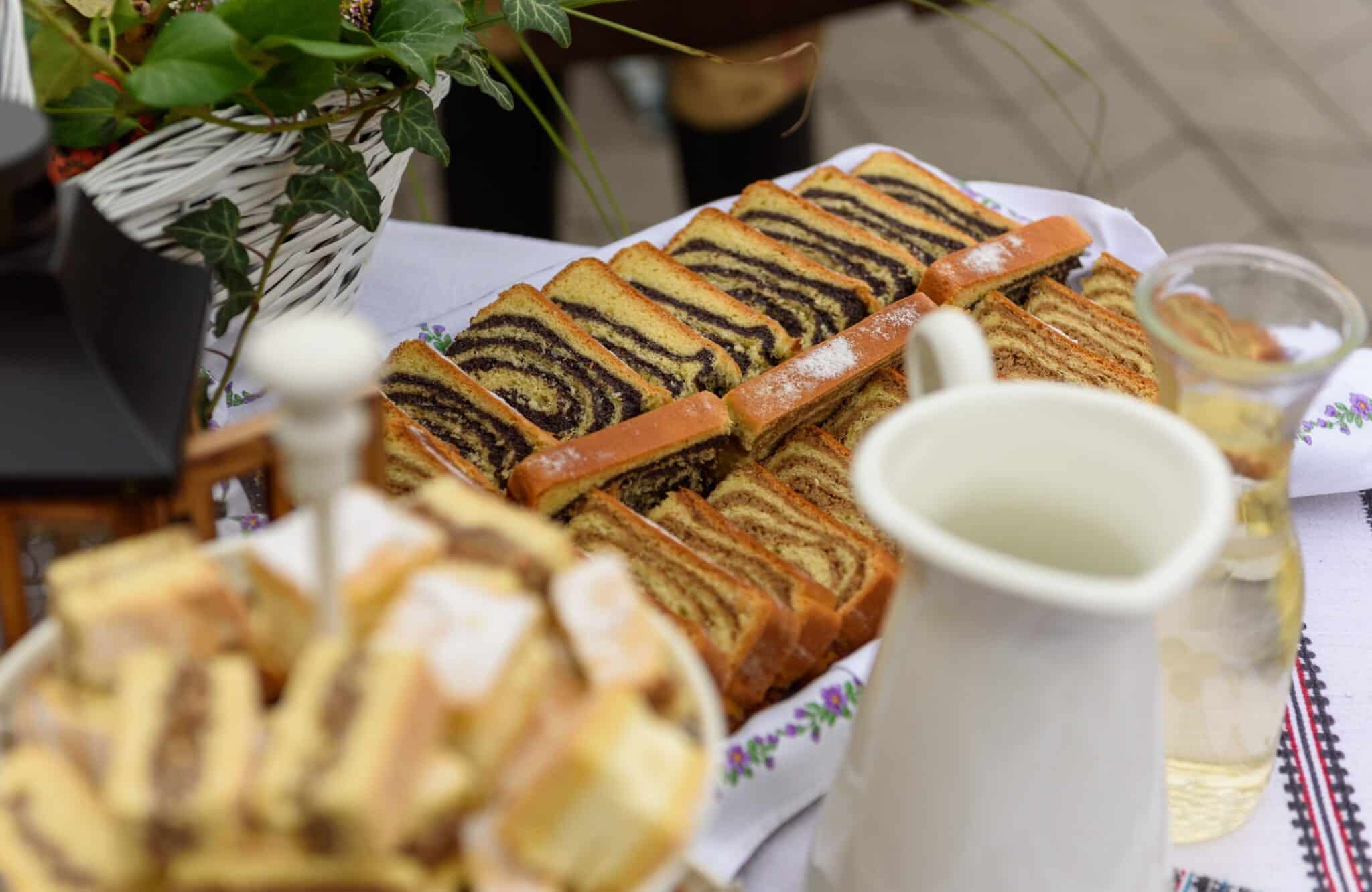
Potica, a traditional Slovenian pastry, is a symbol of celebration and hospitality. This rolled pastry, filled with various sweet or savory fillings, has been gracing Slovenian tables for centuries. It’s not just food; it’s a cultural icon that tells the story of Slovenia’s rich history and culinary traditions.
Our team at Remitly created this guide as part of our series that celebrates the traditional foods of our global customers.
The Origin of Potica
The roots of potica run deep in Slovenian history. Its origins can be traced back to medieval times, when it was reserved for special occasions due to the complexity of its preparation. The name “potica” comes from the Slovene word “poviti,” which means “to wrap” or “to roll.” This reflects the unique method used to create this delicious treat.
In the past, potica was often made in large quantities during holidays and celebrations. It was seen as a way to showcase one’s baking skills and hospitality. Today, it remains an integral part of Slovenian culture and cuisine.
Ingredients Used in Potica
The ingredients used in potica are simple yet versatile. The dough is typically made from flour, yeast, eggs, butter, and milk. However, what truly defines potica is its filling.
Traditionally, tarragon or cottage cheese were popular choices for fillings. But over time, sweet variations have gained popularity with fillings like walnuts, poppy seeds, honey or even chocolate becoming favored options among many households.
A Simple Potica Recipe
Potica is a labor of love, but don’t let that deter you. With some patience and practice, you can create this Slovenian delicacy at home. Here’s a simple recipe for walnut potica, one of the most popular variations.
Ingredients
For the dough:
- 500g all-purpose flour
- 50g sugar
- 1 teaspoon salt
- 2 teaspoons active dry yeast
- 250ml warm milk
- 2 large eggs
- 100g unsalted butter, melted
For the filling:
- 500g walnuts, finely ground
- 100g sugar
- 1 teaspoon vanilla extract
- Zest of one lemon
- 200ml heavy cream
Instructions
- In a large bowl, combine flour, sugar, salt and yeast.
- Add warm milk to the mixture followed by eggs and melted butter.
- Knead until smooth then cover with a cloth and let it rise until doubled in size.
- While waiting for the dough to rise, prepare your filling by combining ground walnuts, sugar, vanilla extract and lemon zest in a bowl.
- Heat up heavy cream until hot but not boiling then pour over your walnut mixture and stir well.
- Once your dough has risen adequately, roll it out thinly on a floured surface.
- Spread your prepared filling evenly across the rolled-out dough.
- Roll up the dough tightly like a jelly roll then place it in a greased loaf pan or round cake tin.
- Bake at 180°C (350°F) for about an hour or until golden brown.
Variations of Potica Across Slovenia
Potica is not a one-size-fits-all kind of pastry. Different regions in Slovenia have their own unique variations of this beloved dish. Some regions prefer savory fillings like cracklings or cheese, while others lean towards sweet fillings such as honey, raisins, and various nuts.
In the region of Prekmurje, for instance, they make a version called “Prekmurska gibanica.” This layered cake includes poppy seeds, walnuts, apples, and cottage cheese – all in one potica!
How Potica is Served and Enjoyed
Potica is often served at room temperature and sliced into thin pieces. It’s enjoyed as a dessert or snack with coffee or tea. During holidays like Christmas and Easter, it’s common to see potica on Slovenian tables as part of the festive spread.
While traditionally enjoyed during special occasions, today you can find potica being served in many Slovenian homes and bakeries throughout the year.
Global Recognition and Appreciation
Over time, potica has gained global recognition and appreciation. It’s often used as a culinary ambassador of Slovenia in international food festivals and events.
In 2016, the European Union granted potica the status of Protected Geographical Indication (PGI), acknowledging its cultural significance and unique regional character. This recognition has helped elevate potica from a national treasure to an internationally appreciated delicacy.
More about the Cuisine of Slovenia
Slovenian cuisine is as diverse as its landscape – from Alpine pastures to Mediterranean coastlines – each region has its own distinct culinary traditions.
Carniolan Sausage
In the Alpine region, the Carniolan sausage is a staple. This smoked sausage made from pork, bacon, and spices is often served with sauerkraut or turnip.
Kranjska Klobasa
Kranjska klobasa, another popular dish, is a type of blood sausage traditionally eaten during winter months. It’s typically served with buckwheat spoonbread known as “žganci.”
Seafood Dishes
Along the coast, seafood dishes are prevalent. Squid, mussels, and fish like sea bass and sardines are often prepared in simple yet flavorful ways.
Slovenian Wines
Slovenia also boasts an impressive wine culture with its three wine-growing regions producing a variety of wines including Merlot, Cabernet Sauvignon and indigenous varieties like Refošk and Teran.
The diversity of Slovenian cuisine reflects the country’s rich cultural heritage and varied geography. Whether it’s potica or Carniolan sausage you’re enjoying – each bite offers a taste of Slovenia’s culinary story.
Visit the homepage, download our app, or check out our Help Center to get started.
